Wabi Sabi Garden Design Tips: Embrace Imperfection in Your Outdoor Space
Wabi-sabi garden design is all about embracing the beauty of imperfection and finding harmony with nature’s natural cycles. This Japanese aesthetic focuses on simplicity, transience, and the charm of things that age gracefully. By incorporating wabi-sabi principles, you can create a garden that feels authentic and timeless.
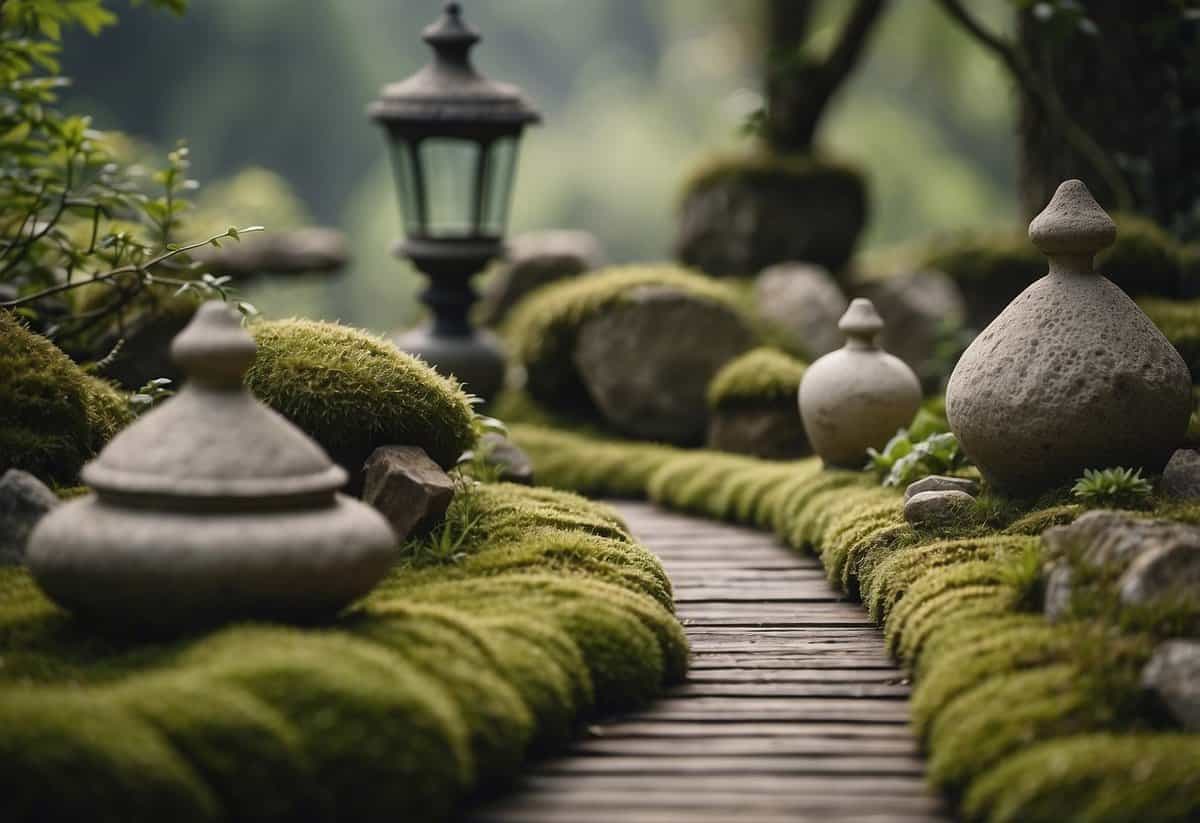
What makes wabi-sabi garden design so special is its ability to evoke a sense of tranquility and mindfulness. Unlike traditional gardens, a wabi-sabi garden encourages you to appreciate the natural changes around you. Whether it’s the weathered look of an old bench or the delicate texture of peeling bark, there’s an opportunity to find beauty in every detail.
1) Embrace Imperfection

Wabi Sabi celebrates the beauty of nature in its most raw form. Don’t worry about making everything perfect. Let your garden show its natural wear and tear.
Use materials like weathered wood and unpolished stones. These elements add character and charm.
Appreciate the irregular shapes and sizes of plants. They add a unique look to your garden space.
2) Use Natural Materials
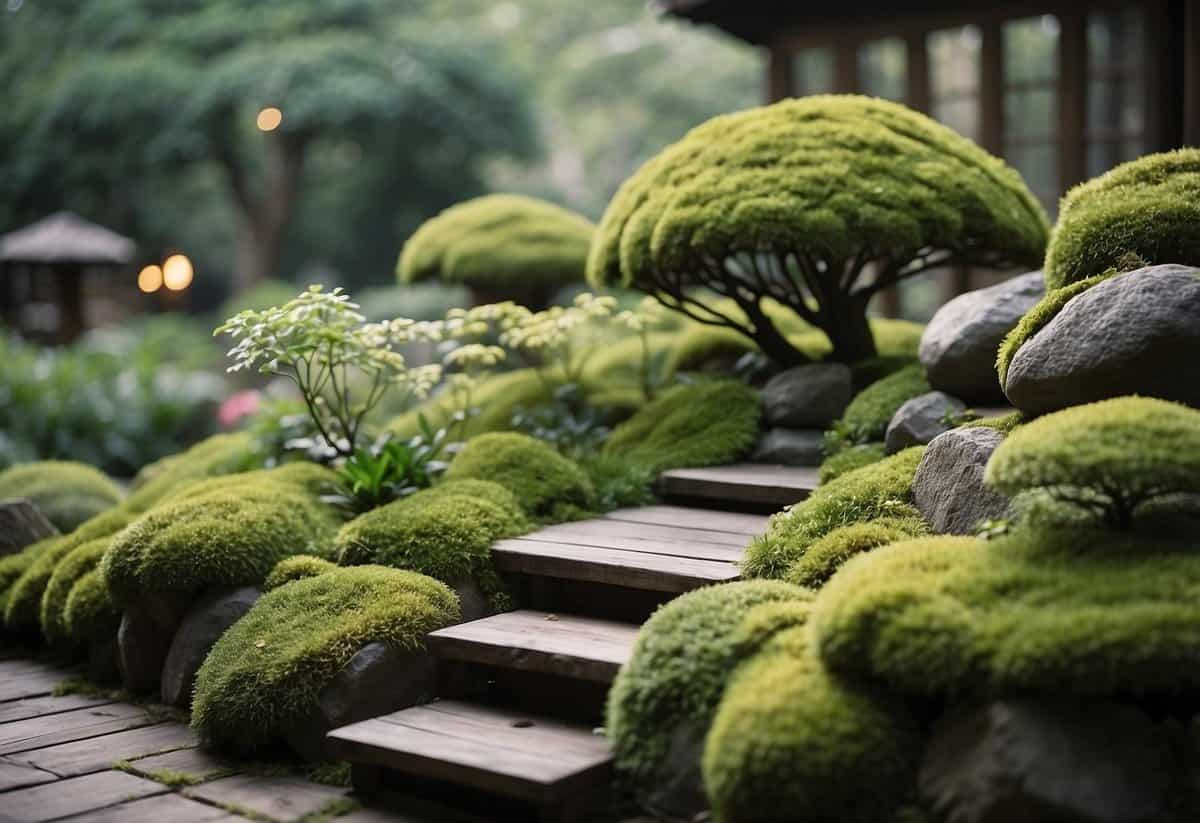
When you’re designing a Wabi Sabi garden, using natural materials is key. Stones, wood, and moss create a calming and authentic atmosphere. These materials age beautifully and blend with the elements.
Incorporate textured plants like trees with peeling bark. This adds visual interest and reflects the changing seasons.
Choose items that look better with age. Weathered pots and aged wood bring character and charm to your garden. Stones can create paths or borders that feel timeless.
3) Create Asymmetry
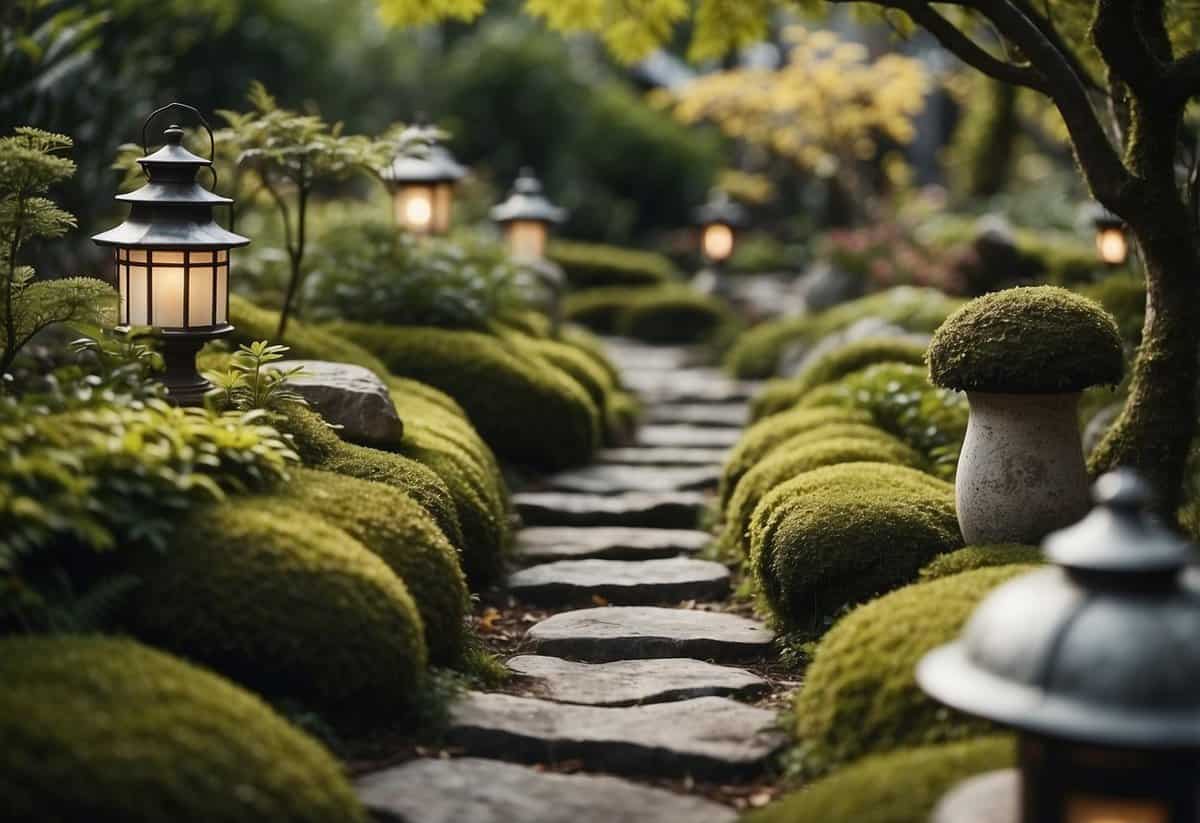
Asymmetry is a key principle in wabi sabi garden design. Embrace the imperfect by arranging elements unevenly.
Use stones of different sizes and shapes. Place them in a way that looks natural.
You can also plant flowers and trees in a scattered pattern. This creates a more authentic, relaxed vibe.
For more ideas on creating asymmetry, check out this guide.
4) Incorporate Weathered Elements
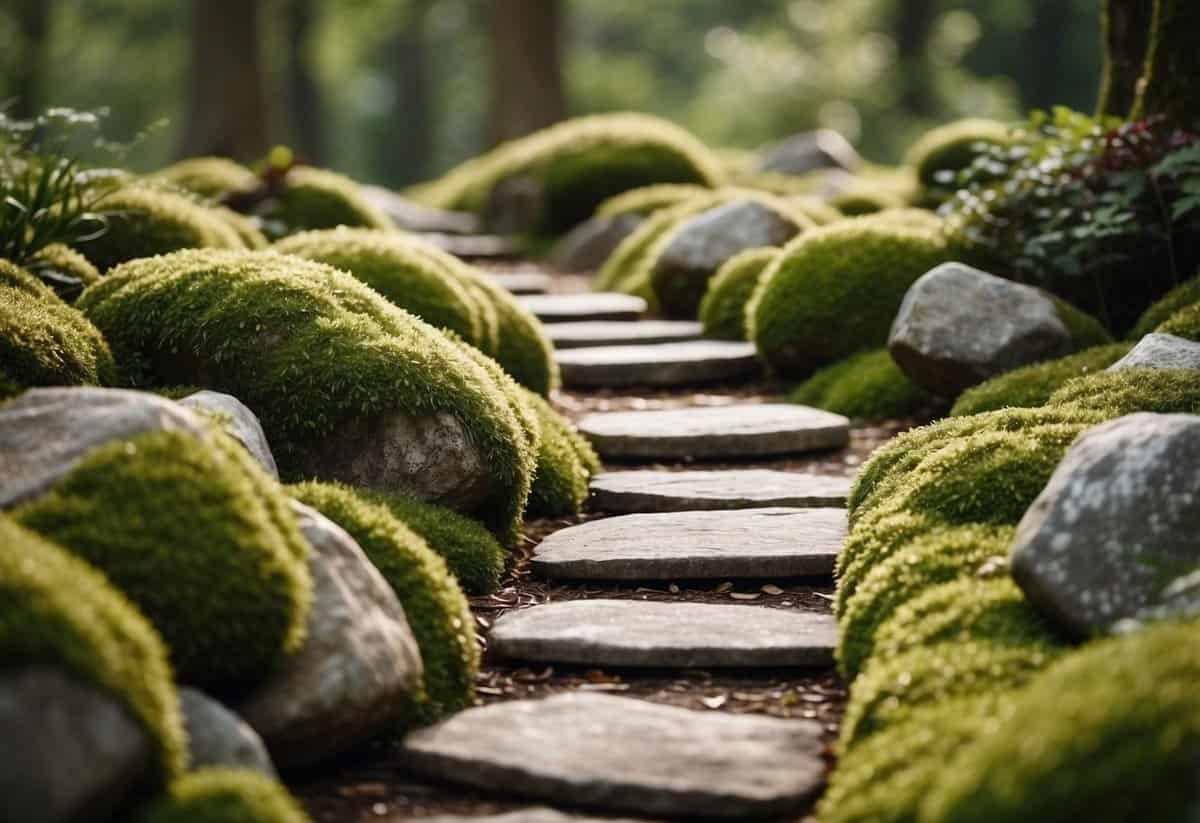
Consider adding weathered elements to your garden. These can be stones that have been worn down by time or old wooden benches.
You might also use rusted metal sculptures or cracked pottery. These items add charm and tell a story of the garden’s natural aging process.
Weathered elements help your garden feel more authentic and timeless. They blend well with plants and create a peaceful atmosphere.
5) Focus on Simplicity

When designing your wabi sabi garden, embrace simplicity. Use natural materials like stone, wood, and plants to create a serene environment.
Avoid clutter by choosing fewer elements that have a meaningful impact. This helps keep the garden calm and inviting.
Select plants that are native or well-suited to your area. This ensures they thrive without too much maintenance.
Use asymmetry and irregular shapes to mimic the natural world. This approach highlights the beauty of imperfection.
Keep paths and layouts simple. This leads to a more peaceful and harmonious garden space.
6) Include Moss and Lichen
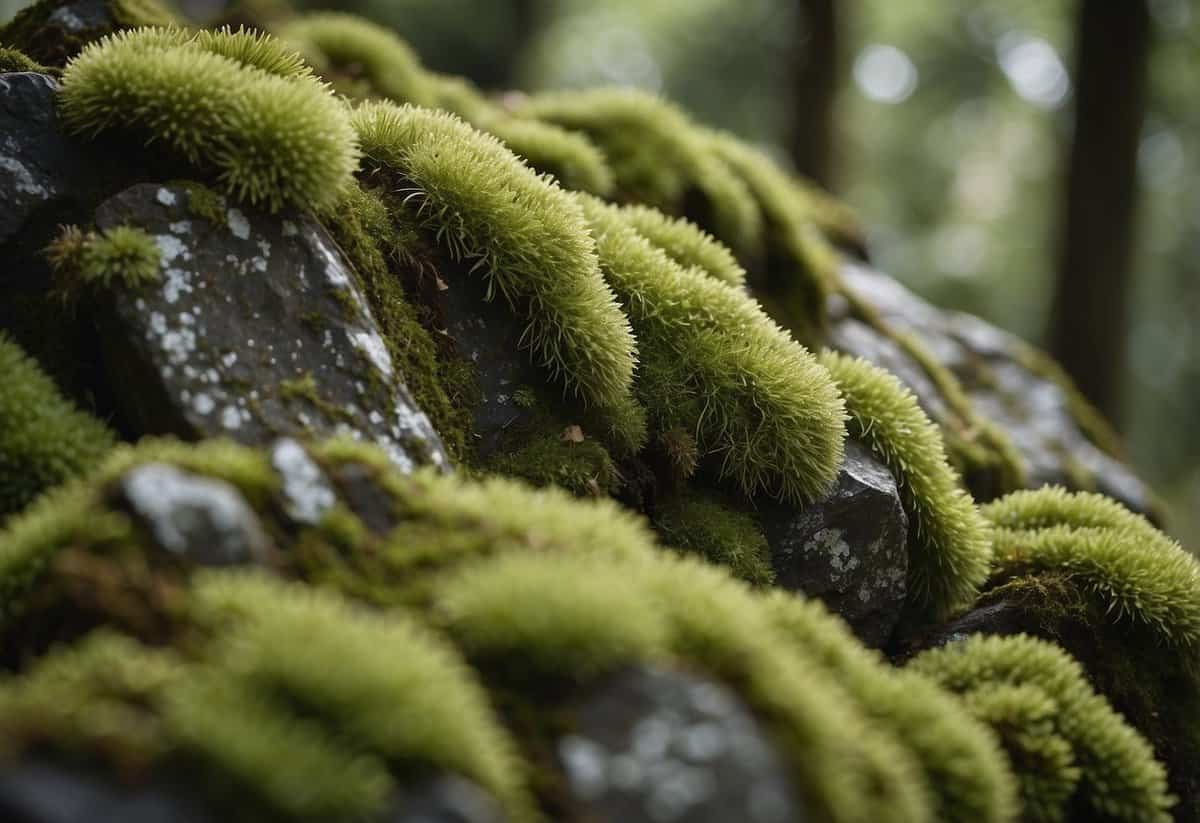
Adding moss and lichen to your garden can create a sense of age and natural beauty. Place stones in areas that don’t get much foot traffic, allowing moss to grow over them.
Lichens can grow on rocks and wood, bringing texture and color. These plants will thrive without much intervention, aligning perfectly with the wabi-sabi aesthetic.
Repurpose old objects and let moss and lichen naturally cover them. This creates a balanced, imperfect look, making your garden feel serene and timeless.
7) Utilize Muted Colors
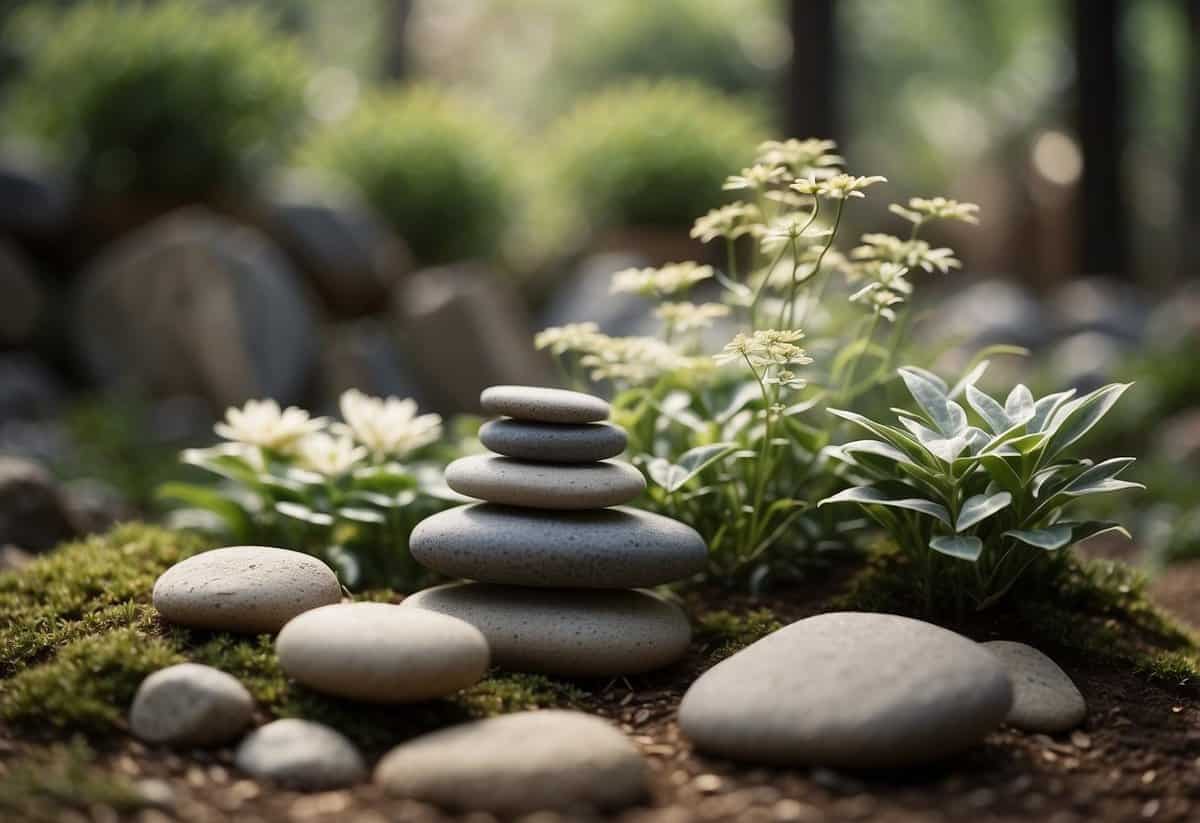
In a wabi-sabi garden, muted colors play a crucial role. Choose earthy, natural shades like browns, greens, and soft greys. These colors help create a peaceful and calming environment.
Avoid bright, highly saturated colors. Muted tones found in nature provide visual harmony. They also help to enhance the natural beauty of your garden features.
Incorporate soft whites and beiges to add subtle contrast. This approach highlights the simplicity and elegance of wabi-sabi design.
8) Design with Flowing Water

Incorporating flowing water into your wabi-sabi garden brings a sense of tranquility.
Choose a simple fountain or a small waterfall. The sound of flowing water promotes relaxation and mindfulness.
Use natural materials like stone and wood to create a harmonious look.
Adding plants that love moisture will enhance the serene atmosphere.
For more ideas, check out these Wabi-Sabi Fountains.
9) Integrate Patina Finishes

Embrace the beauty of aged materials by incorporating patina finishes in your garden.
Look for items like old metal pots, statues, or garden tools that have developed a natural, weathered look.
Patina finishes add character and depth, reflecting the wabi-sabi philosophy of finding beauty in imperfection.
Place these items strategically to enhance the natural, lived-in feel of your garden.
10) Highlight the Beauty of Age
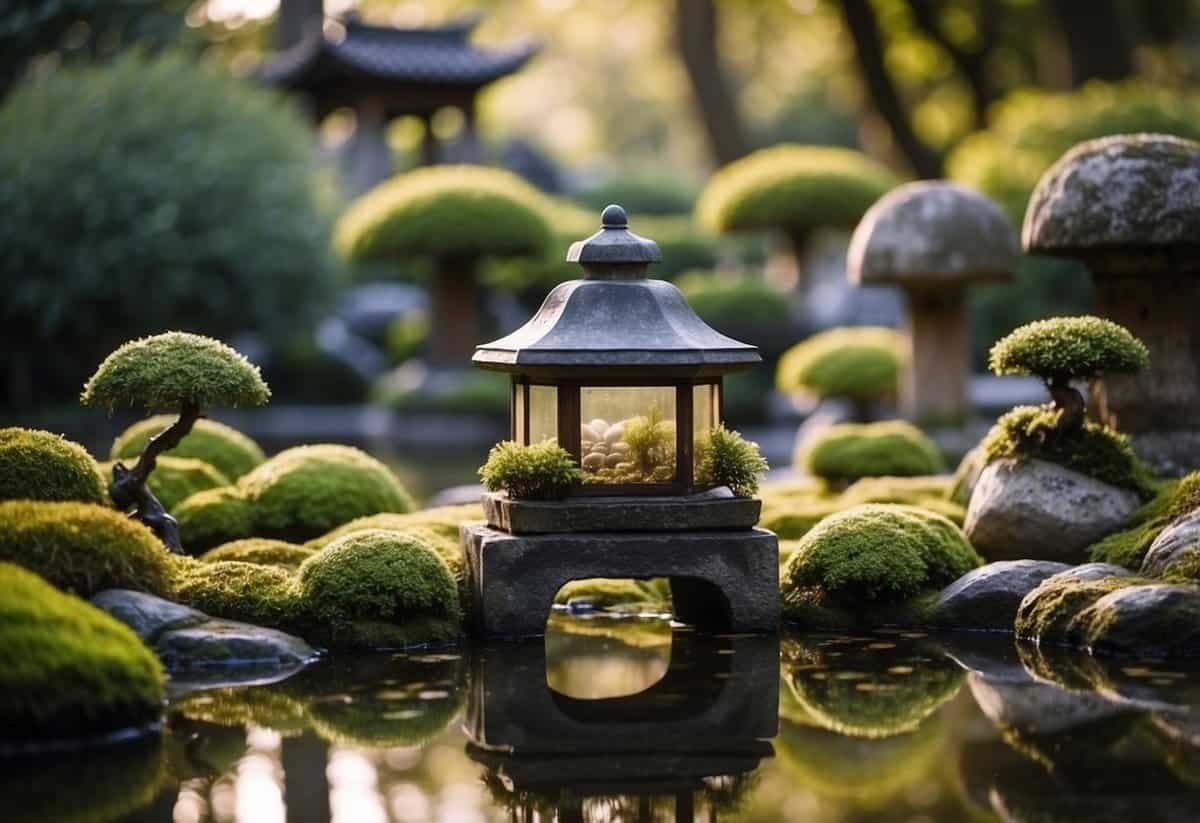
Embrace the natural wear and tear of your garden items. Let your wooden benches show their age with cracks and wear, as it adds character.
Choose plants that change and grow over the years, showing off their natural beauty through different seasons. Trees with peeling bark are especially effective.
Stone paths and sculptures that weather and moss over time bring a sense of history and depth to the garden. Make sure to enjoy these transformations as they happen.
Principles of Wabi Sabi Garden Design

Wabi Sabi garden design focuses on simplicity, naturalness, and an appreciation for the beauty found in imperfection. This approach values aged and weathered elements, enriching your garden with a sense of history and connection.
Embracing Imperfection
In Wabi Sabi garden design, imperfection is celebrated. You might choose pots with slight cracks or uneven edges. Plant placements can be asymmetric, giving a natural look and feel.
Using unrefined materials like stone, wood, or clay adds authenticity. These materials show wear over time, which is embraced rather than hidden.
Paths in the garden don’t need to be perfectly straight. Let them meander with gentle curves. This mimics nature’s own designs and adds an element of surprise to your garden.
Nostalgia and Age
A Wabi Sabi garden often features aged elements that evoke a sense of nostalgia. Think of an old bench with peeling paint or a moss-covered stone. These pieces bring depth and character to the space.
You can use antiques or salvaged items to add history. Weathered pots, rusted metal sculptures, and patinated fountains are perfect examples. Their worn look offers a sense of time passing, connecting past and present.
Encouraging natural aging in your garden means allowing plants to grow and change. Let leaves fall and decay. This adds to the garden’s dynamic beauty and reflects life’s natural cycles. Your space becomes more than just a garden—it becomes a story.
Creating the Wabi Sabi Aesthetic

Wabi sabi garden design emphasizes the beauty found in natural imperfections and simplicity. You’ll focus on using organic materials and creating a balance between simplicity and complexity to foster a calming, authentic space.
Selecting Natural Materials
Choosing natural materials is essential. Opt for stone, wood, and plants that show age and weathering. Moss-covered rocks and aged wooden structures add character.
Plants should not be overly manicured. Let them grow naturally. Use native species that thrive in your local climate. This approach promotes a sense of harmony with the environment.
Incorporate elements like gravel paths and bamboo fences. These materials showcase simplicity and blend well with natural surroundings. Avoid synthetic items as they disrupt the organic feel.
Recycled materials are also great choices. Old bricks or reclaimed wood can add history and depth. The goal is to create a space that feels timeless and connected to nature.
Balancing Simplicity and Complexity
Creating a balance between simplicity and complexity is key. Use asymmetric designs to achieve this. Perfect symmetry can feel artificial, so embrace uneven shapes and forms.
Focus on fewer, well-placed elements rather than clutter. Each item in your garden should have a purpose. A single, twisted tree or a lone stone can become a focal point.
Incorporate layers and textures to add depth. Use different types of plants, from tall grasses to low ground covers. This creates visual interest without overwhelming the senses.
Don’t over-decorate. The wabi sabi aesthetic thrives on minimalism. Let the natural beauty of each element shine. Simple water features, like a small, trickling fountain, can enhance the ambiance without being too flashy.
Balance is about finding harmony between the simple and the complex, creating a serene, inspiring garden space.
Incorporating Wabi Sabi Elements

Incorporating Wabi Sabi elements into your garden involves using rustic decor and integrating weathered patina to create a space that celebrates imperfection and the passage of time.
Using Rustic Decor
Rustic decor plays a big part in Wabi Sabi garden design. Choose items made from natural materials like stone, wood, and clay. These materials age beautifully and add charm over time.
Instead of new, shiny items, go for used or antique pieces. A weathered wooden bench or a stone lantern with moss growing on it can add character to your garden. You can even repurpose old pots and tools to add a unique touch.
Place these elements thoughtfully to create harmony. Avoid clutter by using negative space, or ma, to let each piece stand out. Arrange stones in simple patterns or place a weathered statue in a quiet corner for a touch of serenity.
Integrating Weathered Patina
Weathered patina adds a sense of time’s passage to your garden. You can achieve this by selecting plants and objects that change with the seasons. Choose trees with peeling bark, like birches, or shrubs that dry beautifully in the fall.
Use natural textures and colors to enhance the weathered look. Moss and lichens on stones or pots can create a sense of age and tranquility. You might want to let metal items like iron gates rust naturally to add to the effect.
The idea is to let these elements evolve naturally. Instead of fighting nature, embrace the changes that come with weathering. This approach brings a sense of peace and authenticity to your garden.







